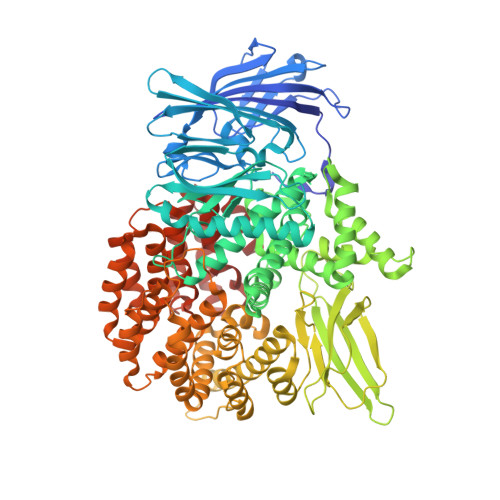Two-Pronged Attack: Dual Inhibition of Plasmodium falciparum M1 and M17 Metalloaminopeptidases by a Novel Series of Hydroxamic Acid-Based Inhibitors.
Mistry, S.N., Drinkwater, N., Ruggeri, C., Sivaraman, K.K., Loganathan, S., Fletcher, S., Drag, M., Paiardini, A., Avery, V.M., Scammells, P.J., McGowan, S.(2014) J Med Chem 57: 9168-9183
- PubMed: 25299353
- DOI: https://doi.org/10.1021/jm501323a
- Primary Citation of Related Structures:
4R5T, 4R5V, 4R5X, 4R6T, 4R76, 4R7M - PubMed Abstract:
Plasmodium parasites, the causative agents of malaria, have developed resistance to most of our current antimalarial therapies, including artemisinin combination therapies which are widely described as our last line of defense. Antimalarial agents with a novel mode of action are urgently required. Two Plasmodium falciparum aminopeptidases, PfA-M1 and PfA-M17, play crucial roles in the erythrocytic stage of infection and have been validated as potential antimalarial targets. Using compound-bound crystal structures of both enzymes, we have used a structure-guided approach to develop a novel series of inhibitors capable of potent inhibition of both PfA-M1 and PfA-M17 activity and parasite growth in culture. Herein we describe the design, synthesis, and evaluation of a series of hydroxamic acid-based inhibitors and demonstrate the compounds to be exciting new leads for the development of novel antimalarial therapeutics.
Organizational Affiliation:
Medicinal Chemistry, Monash Institute of Pharmaceutical Sciences, Monash University , Parkville, Victoria 3052, Australia.



















